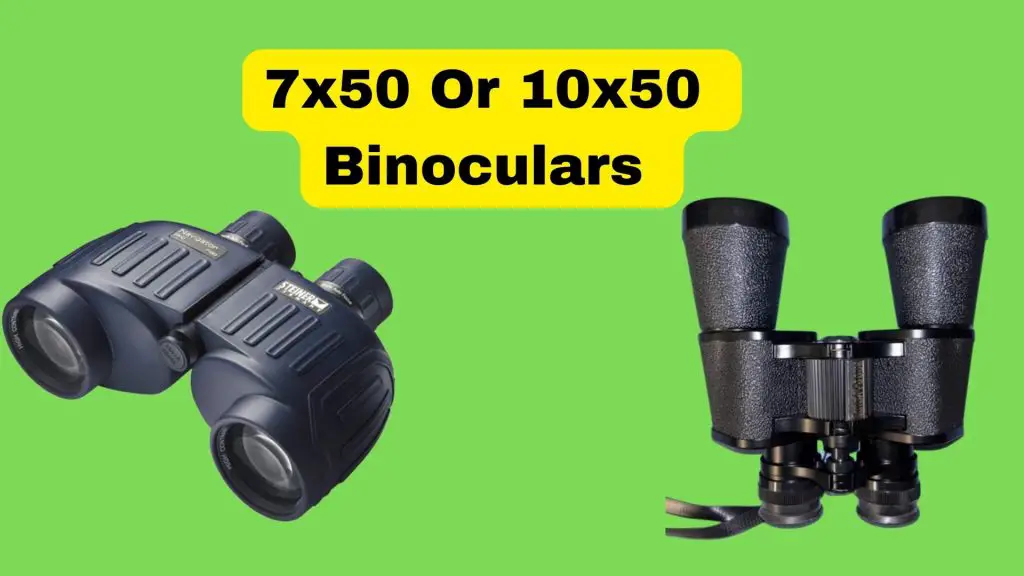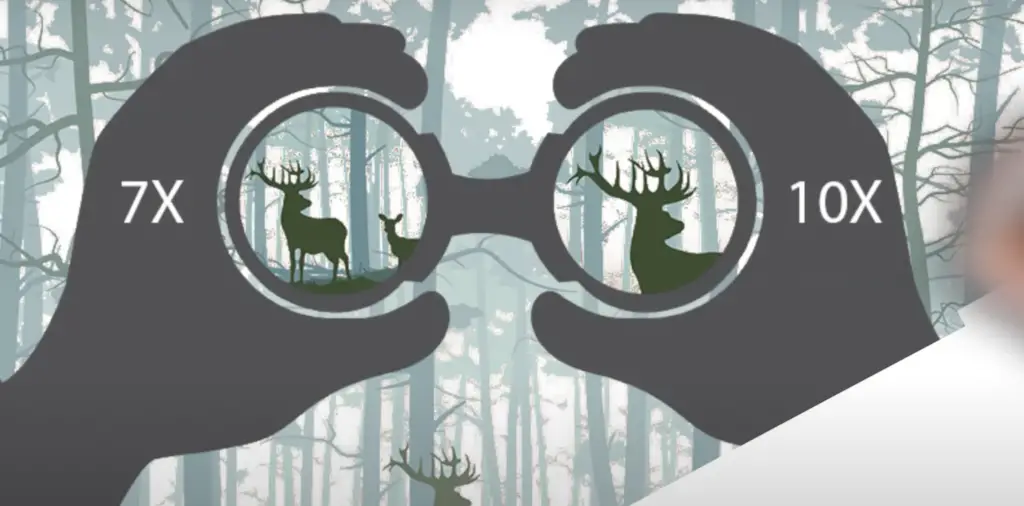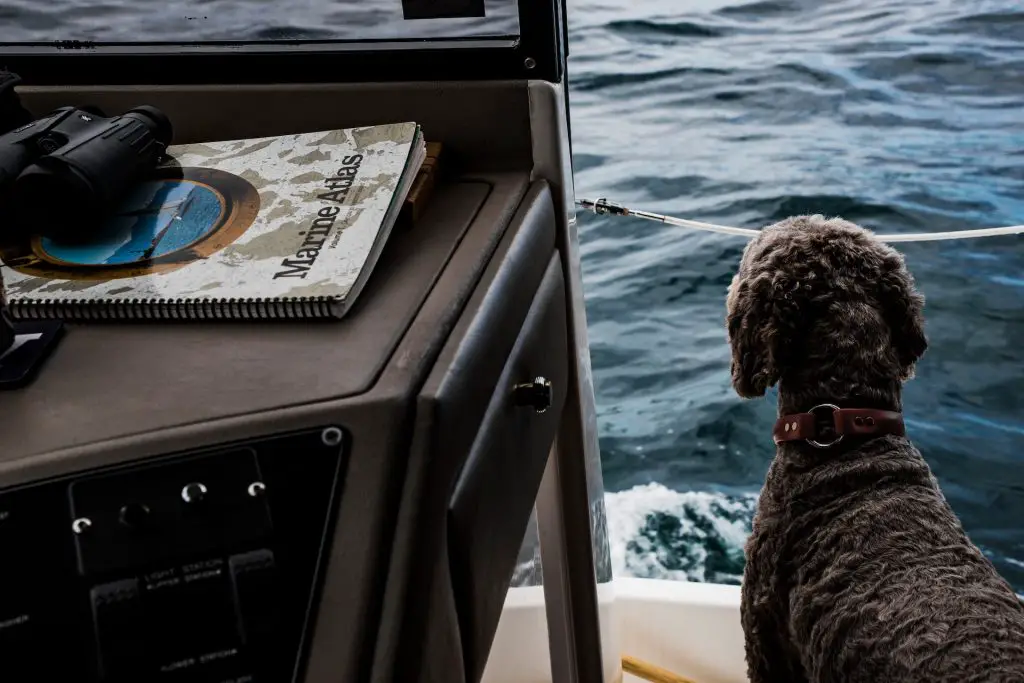7×50 Vs 10×50 Binoculars: Which One Is Better?

Let’s dissect the numbers first. In the “7×50” and “10×50” configurations, the first number signifies the magnification, while the second number represents the diameter of the objective lenses.
These lenses gather light, and their quality can have a more significant impact on your viewing experience than any other aspect of the binoculars.
The Bigger Picture:
Larger objective lenses (like the “50” in both configurations) excel at gathering light.
If you’re observing in dimly lit conditions, such as stargazing on a moonless night, a larger objective lens is your ally. It lets in more light, providing a brighter and more detailed view.
Magnification Matters:
On the other hand, magnification is a double-edged sword. While it brings objects closer, it can also make it challenging to locate and observe your target.
High magnification binoculars tend to amplify any hand tremors, making it harder to maintain a steady view.
This effect becomes more pronounced with increasing magnification. Imagine trying to read a distant sign while standing on a wobbly platform—you get the idea.
Two popular options are 7×50 and 10×50 binoculars.
Each has its strengths and weaknesses, making them better suited for specific tasks.
Let’s explore the considerations for both to help you make an informed choice.
Read: Barska Deep Sea 7×50 Review
7×50 Binoculars Vs 10×50 Binoculars: Considerations
Magnification: 7x (7 times closer than the naked eye)
Objective Lens Diameter: 50mm
Advantages:
- Stability: 7×50 binoculars provide a relatively lower level of magnification, resulting in a more stable image. This stability is especially beneficial for activities like marine observation, stargazing, and wildlife viewing, where a steady view is crucial.
- Wide Field of View: These binoculars owing to a lower magnification than 10X and bigger objective lenses offer a wider field of view, allowing you to scan a larger area. This is advantageous for locating objects quickly, whether it’s spotting wildlife or identifying constellations.
- Low-Light Performance: With a 50mm objective lens diameter, 7×50 binoculars gather more light, making them ideal for low-light conditions. They excel in activities like stargazing during moonlit nights or observing wildlife at dawn and dusk.
- Less Image Shake: The lower magnification reduces the impact of minor hand movements or vibrations, resulting in a more comfortable and less shaky viewing experience.
Considerations:
- Limited Magnification: While stability is an advantage, 7x magnification may not bring distant objects as close as some users desire. If you need to observe finer details from afar, higher magnification binoculars might be preferable.
10×50 Binoculars
Magnification: 10x (10 times closer than the naked eye)
Objective Lens Diameter: 50mm
Advantages:
- Greater Magnification: 10×50 binoculars provide higher magnification, allowing you to get closer to distant objects and observe finer details. This is advantageous for birdwatching, sports events, or situations where you need to see more distant subjects.
- Versatility: They offer a balance between magnification and stability, suitable for a wide range of activities. If you have a steady support like a tripod or monopod, you can maximize their potential.
Considerations:
- Image Shake: The higher magnification amplifies hand movements, making it challenging to maintain a steady view without additional support. Image stabilization techniques or using a tripod may be necessary for extended use.
- Narrower Field of View: 10×50 binoculars typically have a narrower field of view compared to their 7x counterparts. This can make it more challenging to locate fast-moving subjects or scan large areas quickly.
- Reduced Low-Light Performance: While they still have a 50mm objective lens diameter, the higher magnification can limit the amount of light that reaches your eyes, potentially impacting low-light performance.
| Aspect | 7×50 Binoculars | 10×50 Binoculars |
|---|---|---|
| Magnification | 7x (7 times closer) | 10x (10 times closer) |
| Objective Lens Diameter | 50mm | 50mm |
| Advantages | ||
| Stability | More stable view | Balance between stability and magnification |
| Field of View | Wider field for quick scanning | Narrower field, may require more panning |
| Low-Light Performance | Excellent in low light | Good but may be slightly reduced |
| Less Image Shake | Minimal hand movement impact | Amplified hand movement |
| Considerations | ||
| Limited Magnification | May not bring very distant objects as close | Closer observation of distant subjects |
| Image Shake | Minimal impact on stability | Requires additional support or stabilization |
| Narrower Field of View | Easier to locate fast-moving subjects | May require more effort to scan large areas |
| Reduced Low-Light Performance | Excellent low-light performance | Slightly reduced in low-light conditions |
Finding the Right Balance:7×50 vs. 10x50s
Finding the right binoculars is about striking a balance between magnification and objective lens diameter. It depends on your intended use.

Marine Observation
7×50 Binoculars: These binoculars are the classic choice for marine observation.
Their 7x magnification strikes a balance between bringing distant ships, wildlife, or coastal features closer while maintaining a stable image, even on a rocking boat.
The large 50mm objective lenses ensure ample light-gathering power, making them ideal for low-light conditions at dawn or dusk on the water.
They offer a wider field of view, making it easier to scan the horizon and spot marine life or navigate through channels.
10×50 Binoculars: While 10×50 binoculars provide more magnification, they can be challenging to use on a moving boat due to increased image shake.
However, if you’re on a stable platform like a larger vessel or a calm shoreline, the 10x magnification can help you see finer details of distant objects.
Keep in mind that they might not perform as well in low-light conditions compared to 7×50 binoculars.

Wildlife Viewing
7×50 Binoculars: For wildlife enthusiasts, 7×50 binoculars offer a fantastic balance of magnification and stability.
They provide a wider field of view, making it easier to locate and track animals in their natural habitat.
These binoculars are also excellent for low-light conditions during dawn or dusk when many animals are most active.
10×50 Binoculars: If you’re primarily interested in observing birds or wildlife from a fixed location with a tripod or monopod, 10×50 binoculars can be a great choice.
They allow you to get closer to the action and observe finer details, but they may require additional stabilization to minimize image shake.
Sport Events
7×50 Binoculars: Sporting events often involve fast-paced action, and 7×50 binoculars are well-suited for this environment.
Their wider field of view makes it easier to follow the game and anticipate the action. You can quickly scan the entire field or court without missing critical moments.
10×50 Binoculars: While 10×50 binoculars provide more magnification, they may be better suited for specific sports, like birdwatching at a golf tournament or observing track and field events.
However, they can be challenging to use for sports with rapid movement, as it may be more challenging to track fast-moving athletes.
Concerts
7×50 Binoculars: Concerts are all about enjoying the performance, and 7×50 binoculars are ideal for this.
They provide a wide field of view, allowing you to take in the entire stage and immerse yourself in the music.
These binoculars are also comfortable to hold for extended periods, making them a great choice for concerts.
10×50 Binoculars: While 10×50 binoculars offer more magnification, they can be overkill for most concert settings.
They may be more suitable if you’re attending an outdoor concert and want to get a closer look at the performers.
However, for most indoor concerts, 7×50 binoculars are the better choice.
Stargazing
7×50 Binoculars: When it comes to stargazing and astronomy, 7×50 binoculars are often the preferred choice.
Their 7x magnification provides a wide field of view, making it easier to locate constellations and celestial objects.
The large 50mm objective lenses allow for excellent light gathering, enhancing your ability to spot stars, planets, and deep-sky objects.
These binoculars are also well-suited for low-light conditions, perfect for moonlit nights or stargazing away from city lights.
10×50 Binoculars: While 10×50 binoculars offer higher magnification, they may not be the best choice for stargazing due to their narrower field of view.
However, they can excel in situations where you want to focus on specific celestial objects, such as planets or star clusters, and have a stable platform, like a tripod, to reduce image shake.
Birdwatching
7×50 Binoculars: Birdwatching enthusiasts often favor 7×50 binoculars for their well-rounded performance.
These binoculars provide a wide field of view, making it easier to spot birds in their natural habitat.
They’re also excellent for observing birds in low-light conditions during early morning or late evening when many species are most active.
10×50 Binoculars: If you’re primarily interested in birdwatching and have a stable support like a tripod or monopod, 10×50 binoculars can be a great choice.
They allow you to get closer to the birds and observe finer details, making them ideal for stationary birdwatching or bird identification.
Also See: 7×50 vs 8×56 Binoculars
Conclusion
If stability and a wide field of view are crucial, 7×50 binoculars are an excellent choice.
If you require more magnification and are willing to use additional stabilization methods, 10×50 binoculars can provide a closer look at distant objects.
So, whether you opt for 7×50 or 10×50, remember that the best binoculars are the ones that bring you joy in exploring the world around you.
Also See: How Far Can You See With 7×50 Binoculars
Steiner 7×50 Binoculars Deal
This binocular features high-contrast optics for vibrant images, 7x magnification, and a wide field of view. Its sports auto-focus ensures sharp images from 20 yards to infinity. It has a robust, shock-absorbing design, is waterproof, and comes with a Heritage Warranty for lifetime repair/replacement
- HIGH CONTRAST OPTICS - For bright, high-contrast images with true-to-life color reproduction, 7x magnification, 50 mm...
- SPORTS AUTO FOCUS - Delivers, once shot, always sharp, briliant 3D images from 20yds to infinity without refocusing,...
- FLOATING PRISM SYSTEM - Uses flexible silicone lens mounts to absorb severe shock, impact and abuse without damage.
Last update on 2025-11-17


Fantastic site Lots of helpful information here I am sending it to some friends ans additionally sharing in delicious And of course thanks for your effort
Nice article. You’re doing great. It was a pleasure to read.
My brother suggested I might like this blog He was totally right This post actually made my day You can not imagine simply how much time I had spent for this info Thanks